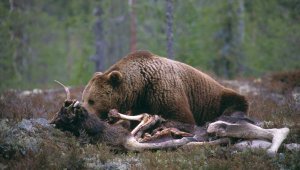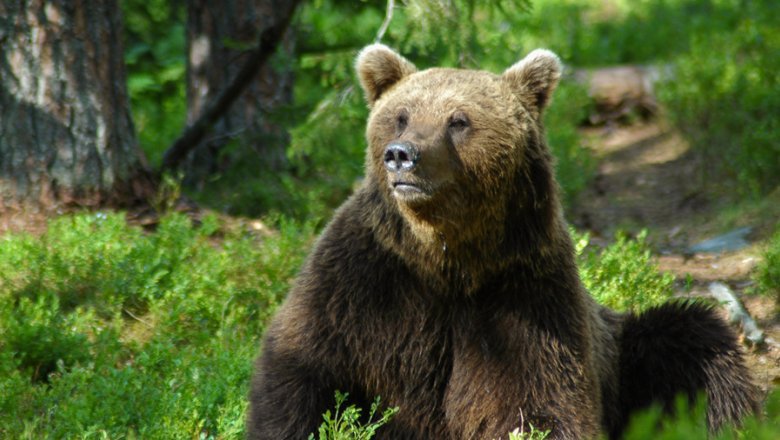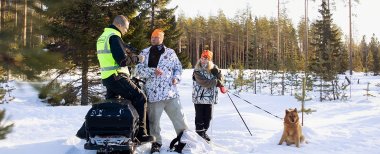Tracking is an important method of collecting data on large carnivores. Animals are tracked and monitored in various ways based on the species and the needs of the research project. On one hand, tracking methods are constantly developing to give even more reliable information. On the other hand, increasing tracking efforts by putting collars on a larger number of animals, for example, also increases costs.
Radio tags
VHF tracking is based on locating radio signals with a homing device. This method requires that the researcher is out in the wild. VHF devices are inexpensive to buy, but the costs of animal tracking are high. This method also results in a fairly low amount of location data.
GPS tracking
This tracking method utilises GPS (Global Positioning System) satellites to track animals. The GPS collar on an animal's neck regularly updates its location data, which is stored in the collar.
This stored data is retrieved for use either by removing the collar or by programming the collar to transmit its data via radio signal every three months, for example. GPS devices are more expensive than VHF devices. However, the costs of tracking are lower and the amount of gained location data is far greater than with the VHF method. GPS-GSM tracking (e.g., GPS Direct System) differs from regular GPS tracking in that with this method the location data reaches the researcher faster as it is transmitted via the GSM mobile network.
The wildlife triangle method
The so-called wildlife triangle method is a unique programme for monitoring over 30 game species. A "wildlife triangle" is a triangle-shaped census line in the terrain. Each side of these triangles is 4 kilometres long, which all together creates a 12-kilometre census line for each triangle. Around 1 800 wildlife triangles have been founded all over the country. Wildlife censuses are conducted twice a year in approximately 800 triangles both in the winter and the summer.
In August, hunters go to their designated wildlife triangles to count the fowl and also log all bear-related sightings. During the twenty years this programme has been in place, a bear has only been seen twice during a census, but tracks, carcasses and other signs of their existence are found quite often. In January-February the hunters go back to the same triangles and count mammal tracks. This results in sightings of wolf, wolverine and lynx tracks. Lynx tracks are the most numerous. Fewer than 100 wolf and wolverine tracks are usually found in these censuses, which means the results cannot be used for the purposes of making population estimates for these species.
Genetic research
National Resources Institute Finland participates in international research projects charting the genetic makeup of large carnivore populations. Its most important research partners are the universities of Uppsala, Lund, Tartu and Bern. Based on the results of these projects, our predator populations exhibit the genetic variance characteristic of large, coherent populations. This is a natural result of our large carnivores belonging to wider geographic populations, which are mostly situated in Russia. The wolverines in Fell Lapland are the exception to this rule as they are closer to the population living in the northern parts of Sweden and Norway than to Russian populations.


